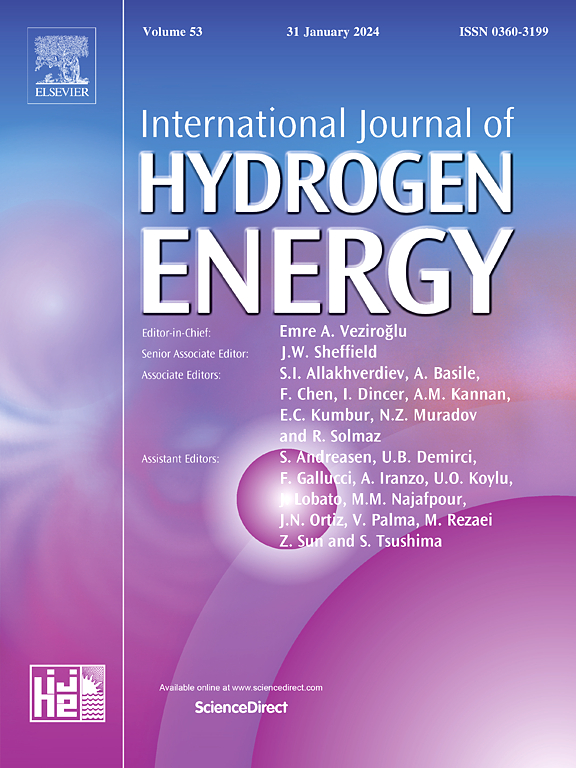In-situ methanation of adsorbed CO over Ni/CeO2 catalyst using H2 release from vanadium powder as H2-storage material
IF 8.1
2区 工程技术
Q1 CHEMISTRY, PHYSICAL
引用次数: 0
Abstract
This study examines the feasibility of using a physical mixture of Ni/CeO2 catalyst and vanadium (V) powder (as an H2-storage material) for methanation of dilute CO. The system principle involves CO adsorption onto the Ni/CeO2 catalyst and H2 storage in V powder at a low temperature (∼50 °C). Subsequently, temperature increase of the physical mixture under an inert gas flow triggers H2 release from the V powder, enabling in-situ methanation of the adsorbed CO on the Ni/CeO2 catalyst. An optimized Ni/CeO2:V weight ratio of 1:1 results in a high conversion (76 %) of the initially adsorbed CO, yielding 0.29 μmol of CH4. The system demonstrates feasibility of processing a dilute feed stream, producing CH4 even when only 1 % CO is used during adsorption. However, cyclic testing reveals significant durability issues. The performance degradation is attributed to two factors that diminish the H2-release capacity of V powder: (i) surface oxidation by product water and (ii) detrimental V-O-Ce interfacial interactions during thermal cycling. Despite these limitations, this study demonstrates the potential of coupling catalytic reactions with H2-storage materials for the effective utilization of dilute gas streams.

钒粉释放H2作为储氢材料,在Ni/CeO2催化剂上原位甲烷化吸附CO
本研究探讨了使用Ni/CeO2催化剂和钒(V)粉末(作为H2储存材料)的物理混合物进行稀CO甲烷化的可行性。该系统原理包括CO吸附在Ni/CeO2催化剂上,H2在低温(~ 50℃)下储存在V粉末中。随后,在惰性气体流动下,物理混合物温度升高,触发V粉末释放H2,使吸附的CO在Ni/CeO2催化剂上原位甲烷化。优化后的Ni/CeO2:V质量比为1:1时,初始吸附CO的转化率高达76%,CH4的收率为0.29 μmol。该系统证明了处理稀料流的可行性,即使在吸附过程中只使用1%的CO,也能产生CH4。然而,循环测试揭示了显著的耐久性问题。性能下降是由于两个因素降低了V粉的h2释放能力:(i)产物水的表面氧化和(ii)热循环过程中有害的V- o - ce界面相互作用。尽管存在这些限制,但本研究证明了将催化反应与h2储存材料偶联以有效利用稀气流的潜力。
本文章由计算机程序翻译,如有差异,请以英文原文为准。
求助全文
约1分钟内获得全文
求助全文
来源期刊

International Journal of Hydrogen Energy
工程技术-环境科学
CiteScore
13.50
自引率
25.00%
发文量
3502
审稿时长
60 days
期刊介绍:
The objective of the International Journal of Hydrogen Energy is to facilitate the exchange of new ideas, technological advancements, and research findings in the field of Hydrogen Energy among scientists and engineers worldwide. This journal showcases original research, both analytical and experimental, covering various aspects of Hydrogen Energy. These include production, storage, transmission, utilization, enabling technologies, environmental impact, economic considerations, and global perspectives on hydrogen and its carriers such as NH3, CH4, alcohols, etc.
The utilization aspect encompasses various methods such as thermochemical (combustion), photochemical, electrochemical (fuel cells), and nuclear conversion of hydrogen, hydrogen isotopes, and hydrogen carriers into thermal, mechanical, and electrical energies. The applications of these energies can be found in transportation (including aerospace), industrial, commercial, and residential sectors.
 求助内容:
求助内容: 应助结果提醒方式:
应助结果提醒方式:


